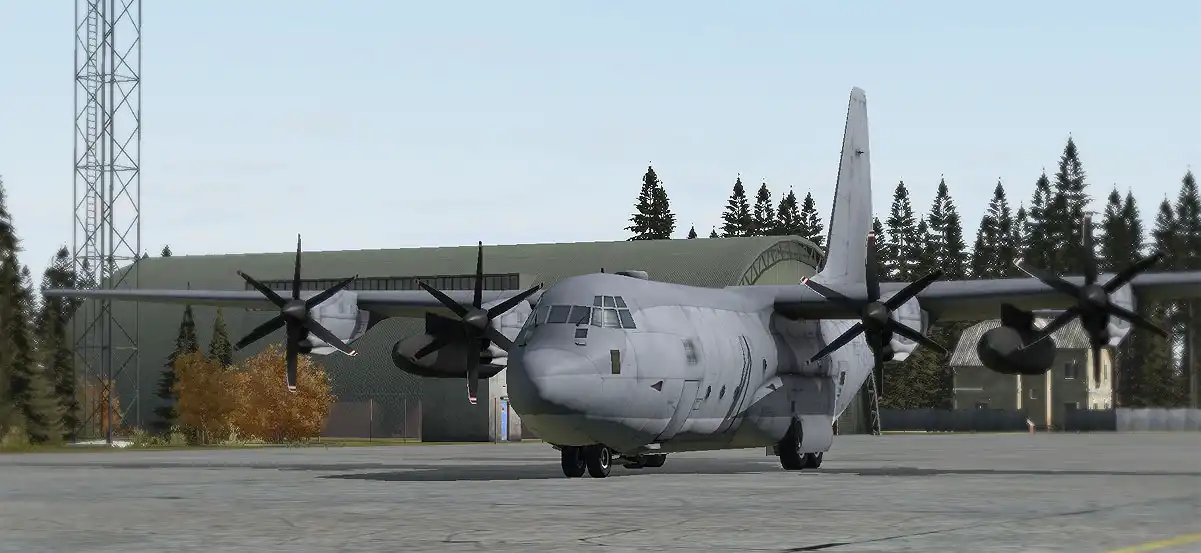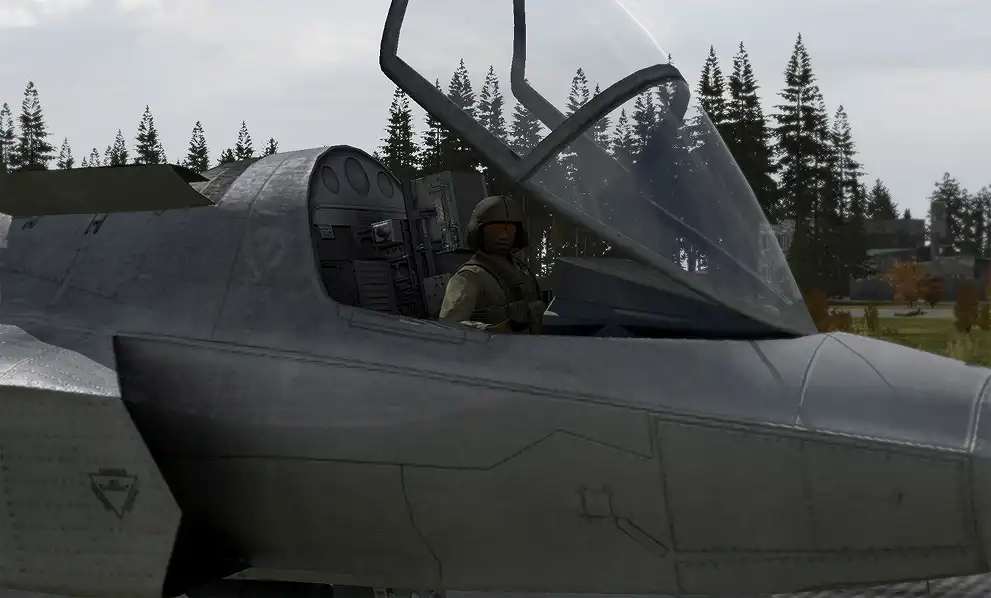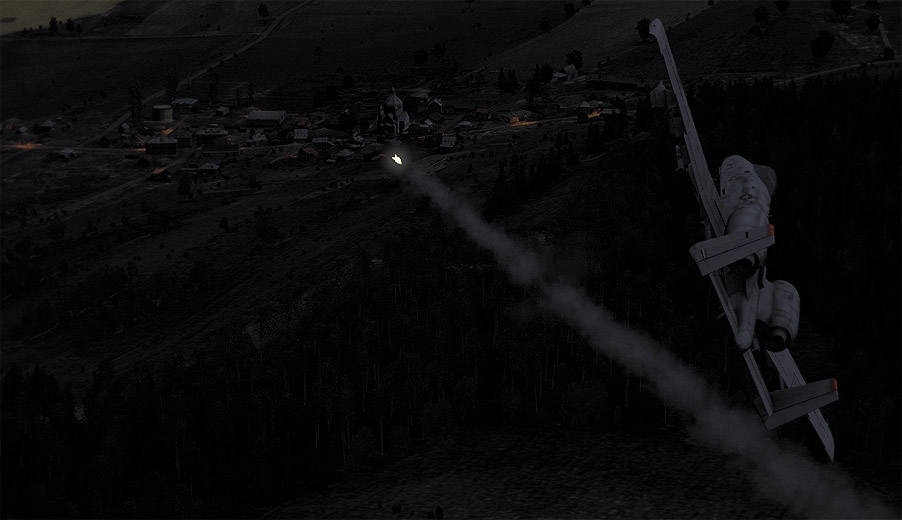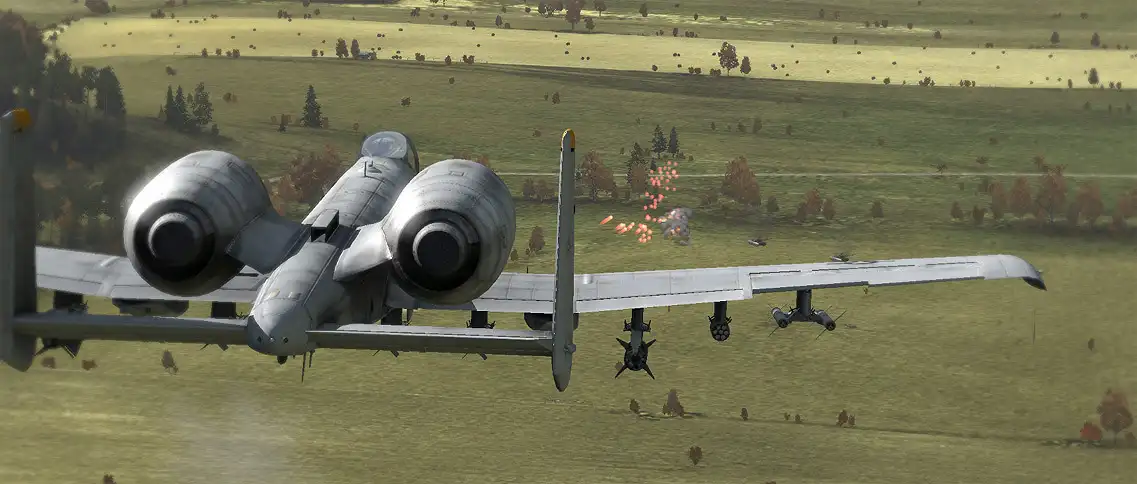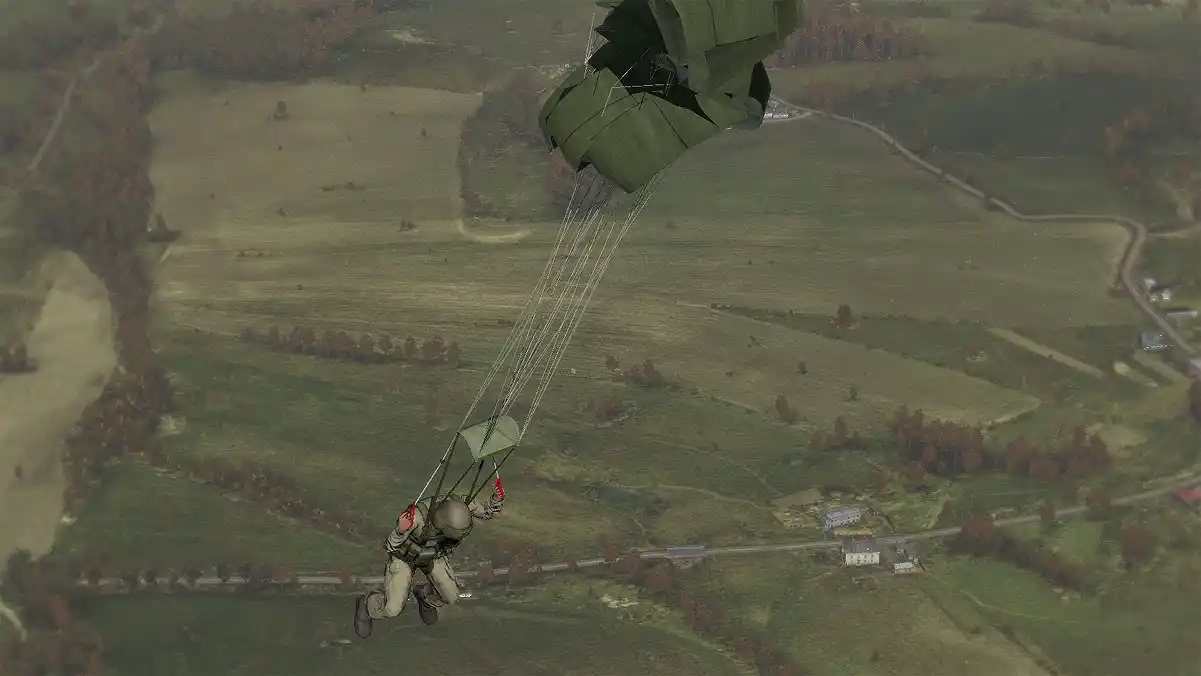![]()
Types of Fixed-Wing Aircraft 
Fixed-wing aircraft can be broken into several main groups for the purposes of ArmA, though some of them have little relevance to the game and will not be seen with any frequency. The main groups are CAS, Air Superiority, Bomber, and Transport.
Close Air Support 
These are the most relevant to the ArmA experience. CAS aircraft are specialized at ground attack and are designed to provide excellent close air support to infantry.
loaded with bombs, Maverick ATGMs, FFARs, and AA missiles"
Air Superiority 
You will see these less frequently than straight CAS aircraft. Air Superiority Fighters can be multi-role, able to hit either ground targets or air targets with effectiveness. They tend to be faster than other aircraft.
This configuration has all weapons stowed in internal bays. "
Bomber 
Very rare in ArmA2, though they may show up at some point. Bombers can obliterate large swaths of ground with massive payloads. They fly in, drop their bombs, potentially kill a huge number of the enemy, and are gone. These will rarely be able to provide effective CAS in the way that a dedicated attack aircraft can. However, if you'd like to flatten a small village, they will come in handy.
Transport 
Transport aircraft like the C-130 will most likely be seen only in missions where we act as paratroops. They are unarmed and vulnerable but can deliver a large number of airborne soldiers into the action in short order.
Fixed-Wing Aircraft Crew Roles 
Pilot 
The fixed-wing pilot is the standard in most of the jet aircraft we will see in ArmA. He does everything in his aircraft - navigates, communicates and coordinates with ground forces, employs his weapons in support of ground forces, and so on and so forth
Copilot 
The copilot/gunner of a fixed-wing aircraft deals primarily with weapons employment, navigation, and communication with ground elements. These are fairly rare - only the Su-34 in ArmA2 even has one by default. Basically, he allows the pilot to concentrate fully on flying the craft without interruption.
Attack Aircraft Attack Types 
Fixed-Wing attack types share some similarities with their rotary-wing counterparts, but due to the speed at which the aircraft moves and the differences of FW flight compared to RW flight, they are distinctly different attack types that must be mastered separately.
Break-Off 
A fixed-wing break-off attack is used to avoid flying over a danger area. Because of the speed at which a plane moves, break-off attacks typically are used when firing air-to-ground (AGM) missiles. The aircraft can fire the missile from extended ranges and break well before coming into effective range of the enemy air defenses.
Dive 
A diving attack is the preferred method for delivering rockets, laser-guided bombs, cannon fire, and 'dumb' bombs/munitions. This is because the "long axis" of the ordnance delivery becomes shortened when coming in in a dive, and thus ordnance tends to land closer together and human error (ie: timing of a bomb drop) is minimized.
When conducting a dive attack, two methods can be used during the approach. The first is a high-altitude run-in, followed by a dive onto the target and ordnance delivery.
The second method is a low-altitude approach, using terrain to mask the aircraft, before pulling up into a steep climb followed by a dive and ordnance delivery on target. This is known as a "Pop-Up" attack.
Note that when it comes to dive attacks, the steeper the dive is, the more accurate the ordnance delivery will be - to an extent. The reverse of that is that the steeper the dive is, the faster you are likely to close on the target, and the harder it will be to acquire/align/fire/pull out. Finding a good balance between dive angle, aircraft speed, and other delivery considerations is key to mastering the dive attack.
Note also that the higher that laser-guided bombs can be dropped, the more time they will have to adjust their flight and zero in on the laser designation. With cannon fire, the further away it is initiated, the more 'spread' there will be to the impact area, and the more damaging it will likely become.
Slashing/Strafing 
The most basic fixed-wing attack run is a slashing attack or strafing run. In this attack, the aircraft flies in, fires cannons, FFARs, or other munitions and then flies over and past the target.
Slashing attacks typically are done at a shallow dive or during level flight (depending on the target being attacked, the terrain it is on, etc). The pilot should maneuver his aircraft in an evasive fashion up until the last possible moment, as this gives the enemy less time to settle their sights on his aircraft. Direct attacks against anti-aircraft artillery such as Shilkas are done in an undulating pattern where the attacking aircraft pitches up and down, firing each time his weapons are aligned with the target, with the rest of the time acting to throw the Shilka's aim off.
Fixed Wing Aircraft Damage Model 
Exploding into flames 
There really isn't much to say about the damage model for fixed-wing aircraft. Aside from fuel leaks, there's not much that happens - typically you're either ok, or you're dead. You may have a small window in which to eject from the aircraft in some situations, though.
 新規
新規 編集
編集 添付
添付 一覧
一覧 最終更新
最終更新 差分
差分 バックアップ
バックアップ 凍結
凍結 複製
複製 名前変更
名前変更 ヘルプ
ヘルプ



